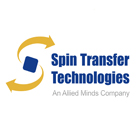Focus
Spin-transfer-torque memory
- Focus issue:
- March 2015 Volume 10 No 3
Image: © INGRAM PUBLISHING/THINKSTOCK
Non-volatile memories that are faster, cheaper and less power-hungry than existing solutions might be built by using solid-state devices in which information is stored and read electrically rather than by magnetic fields. Spin-transfer-torque magnetic random access memory (STT-MRAM) — the most advanced of these emerging technologies for solid-state non-volatile memory — is about to hit the market. This Nature Nanotechnology focus overviews the prospects and remaining challenges that STT-MRAM and competing emerging technologies face in terms of mass-market commercialization.
Produced with support from Spin Transfer Technologies
Editorial
Memory with a spin p185
doi:10.1038/nnano.2015.50
Spintronic devices that electrically store non-volatile information are promising candidates for high-performance, high-density memories.
Commentaries
A new spin on magnetic memories pp187 - 191
Andrew D. Kent & Daniel C. Worledge
doi:10.1038/nnano.2015.24
Solid-state memory devices with all-electrical read and write operations might lead to faster, cheaper information storage.
Memory leads the way to better computing pp191 - 194
H.-S. Philip Wong & Sayeef Salahuddin
doi:10.1038/nnano.2015.29
New non-volatile memory devices store information using different physical mechanisms from those employed in today's memories and could achieve substantial improvements in computing performance and energy efficiency.
Memory on the racetrack pp195 - 198
Stuart Parkin & See-Hun Yang
doi:10.1038/nnano.2015.41
Racetrack memory stores digital data in the magnetic domain walls of nanowires. This technology promises to yield information storage devices with high reliability, performance and capacity.
Review
Control of magnetism by electric fields pp209 - 220
Fumihiro Matsukura, Yoshinori Tokura & Hideo Ohno
doi:10.1038/nnano.2015.22
This Review discusses recent advances towards electric-field control of magnetism in ferromagnetic semiconductors and metals, and in multiferroics.
Letter
Domain-wall velocities of up to 750 m s-1 driven by exchange-coupling torque in synthetic antiferromagnets pp221 - 226
See-Hun Yang, Kwang-Su Ryu & Stuart Parkin
doi:10.1038/nnano.2014.324
Racetrack memories made from synthetic antiferromagnetic structures with almost zero net magnetization allow for fast current-driven motion of domain walls.
From the Archives
Review
Memristive devices for computing
J. Joshua Yang, Dmitri B. Strukov & Duncan R. Stewart
doi:10.1038/nnano.2012.240
This Review looks at recent progress in the development and understanding of memristive devices, and examines the performance requirements for computing with such devices.
Letters
Magnonic charge pumping via spin–orbit coupling
Chiara Ciccarelli, Kjetil M. D. Hals, Andrew Irvine, Vit Novak, Yaroslav Tserkovnyak, Hidekazu Kurebayashi, Arne Brataas & Andrew Ferguson
doi:10.1038/nnano.2014.252
Magnetic excitations in a ferromagnet known as magnons can be converted into charge currents through a relativistic interaction that couples the spin of an electron with its orbital angular momentum.
Nanomagnonic devices based on the spin-transfer torque
S. Urazhdin, V. E. Demidov, H. Ulrichs, T. Kendziorczyk, T. Kuhn, J. Leuthold, G. Wilde & S. O. Demokritov
doi:10.1038/nnano.2014.88
Magnonic nano-waveguides created by dipolar fields enable efficient coupling and transmission of spin waves generated by spin-torque nano-oscillators.
Spin Hall effect clocking of nanomagnetic logic without a magnetic field
Debanjan Bhowmik, Long You & Sayeef Salahuddin
doi:10.1038/nnano.2013.241
Nanomagnetic logic elements that do not require a magnetic field for clocking are now fabricated.
Voltage-controlled domain wall traps in ferromagnetic nanowires
Uwe Bauer, Satoru Emori & Geoffrey S. D. Beach
doi:10.1038/nnano.2013.96
A voltage can be used to control traps with pinning strengths exceeding 650 Oe that affect domain wall motion in ultrathin metallic ferromagnets.
Articles
Switching of perpendicular magnetization by spin–orbit torques in the absence of external magnetic fields
Guoqiang Yu, Pramey Upadhyaya, Yabin Fan, Juan G. Alzate, Wanjun Jiang, Kin L. Wong, So Takei, Scott A. Bender, Li-Te Chang, Ying Jiang, Murong Lang, Jianshi Tang, Yong Wang, Yaroslav Tserkovnyak, Pedram Khalili Amiri & Kang L. Wang
doi:10.1038/nnano.2014.94
Spin–orbit torques in a geometrically asymmetric device made from a perpendicularly magnetized ferromagnet can switch its magnetization without the assistance of an applied magnetic field.
An antidamping spin–orbit torque originating from the Berry curvature
H. Kurebayashi, Jairo Sinova, D. Fang, A. C. Irvine, T. D. Skinner, J. Wunderlich, V. Novák, R. P. Campion, B. L. Gallagher, E. K. Vehstedt, L. P. Zârbo, K. Výborný, A. J. Ferguson & T. Jungwirth
doi:10.1038/nnano.2014.15
A type of spin–orbit torque originating from the Berry curvature is identified in ferromagnets with bulk inversion asymmetry.
Symmetry and magnitude of spin–orbit torques in ferromagnetic heterostructures
Kevin Garello, Ioan Mihai Miron, Can Onur Avci, Frank Freimuth, Yuriy Mokrousov, Stefan Blügel, Stéphane Auffret, Olivier Boulle, Gilles Gaudin & Pietro Gambardella
doi:10.1038/nnano.2013.145
Spin–orbit torques in heavy metal/ferromagnetic layers have a complex dependence on the magnetization direction. This dependence can be exploited to increase the efficiency of spin–orbit torques.
Chiral spin torque at magnetic domain walls
Kwang-Su Ryu, Luc Thomas, See-Hun Yang & Stuart Parkin
doi:10.1038/nnano.2013.102
The influence of magnetic fields on the current-driven motion of domain walls in nanowires with perpendicular anisotropy shows that two spin–orbit-derived mechanisms are responsible for their motion.

